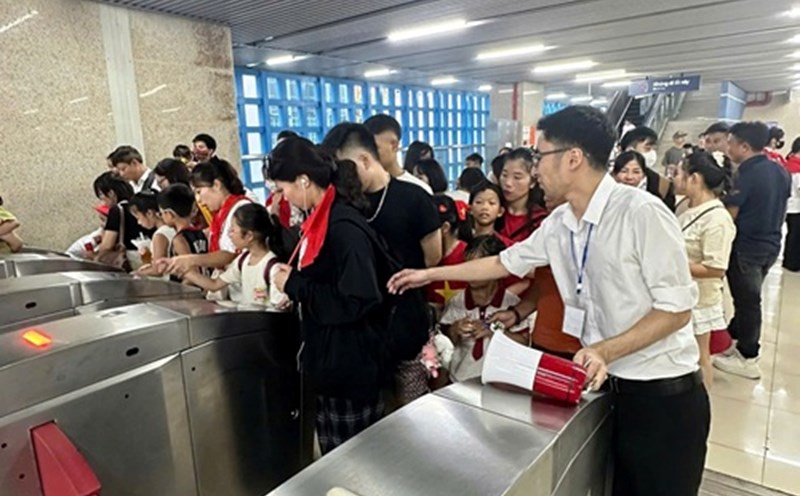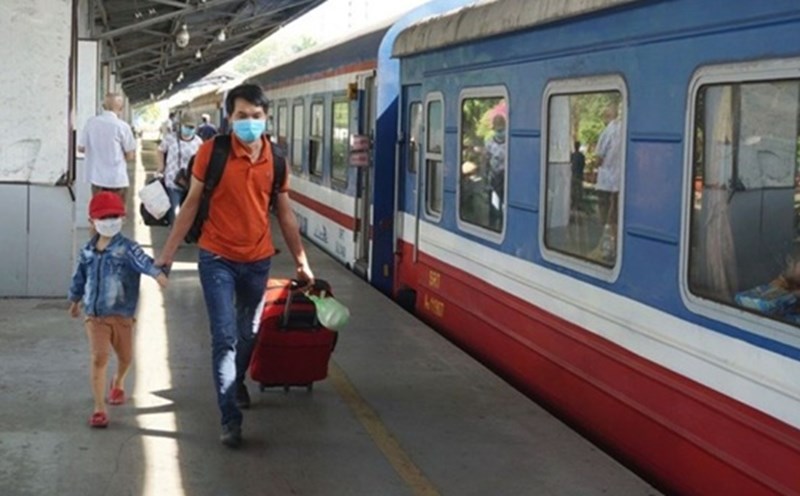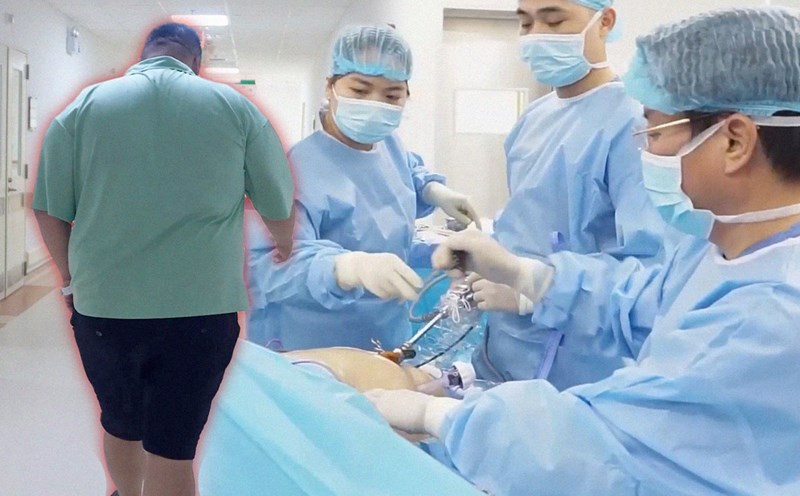Many major railway projects are preparing for investment. According to the plan, the national railway network in Ho Chi Minh City will have 8 routes.
Currently, only the 1,726km Ho Chi Minh City - Hanoi route is in operation, while the North - South high-speed railway line is under research.
The new routes expected to be built include: Bien Hoa - Vung Tau, Ho Chi Minh City - Loc Ninh, Ho Chi Minh City - Can Tho, Thu Thiem - Long Thanh, Ho Chi Minh City - Tay Ninh and routes connecting Hiep Phuoc port and Long An port. In particular, some projects are being strongly promoted for early implementation.
The Ho Chi Minh City - Loc Ninh railway line (Di An - Bau Bang section) is more than 52.3km long, of which nearly 40km goes elevately, the rest goes on the ground. According to the pre-feasibility report, the route will operate passenger ships at a speed of 160km/h and cargo ships at a speed of 120km/h, with a preliminary total investment of more than 64,148 billion VND.
Another important project is the Thu Thiem - Long Thanh railway line, about 42km long, with a total investment of 3.5 billion USD. The Ministry of Construction is completing a pre-feasibility study report, expected to be submitted to the National Assembly for approval of the investment policy in October 2025. The Ministry of Construction has proposed that the Prime Minister assign Ho Chi Minh City as the investor of this railway to ensure consistency and unity.
For the Ho Chi Minh City - Can Tho route, the Ministry of Construction aims to start construction before 2030, completing it synchronously with the North - South high-speed railway. This route is more than 174km long, starting at An Binh Station (Di An City, Binh Duong Province, now under Ho Chi Minh City), ending at Can Tho Station. The designed speed is 160km/h for passenger ships and 120km/h for cargo ships. Phase 1 has a total investment of more than VND 173,600 billion (US$7.16 billion), phase 2 is upgraded to a double route with an additional capital of nearly VND 65,000 billion.
At the same time, the Ho Chi Minh City People's Committee also assigned the Urban Railway Management Board to be the investor of metro projects No. 1 (Binh Duong New City - Suoi Tien) and No. 2 (Thu Dau Mot - Hiep Binh Phuoc), with a total capital of nearly 100,000 billion VND.
Driving force for the formation of a green transport axis in the South
Experts say that when completed synchronously, these railway lines will form a green logistics axis, connecting Ho Chi Minh City with Cai Mep, Bau Bang, Can Tho. This will be the "backbone" of sustainable transportation in the South, and at the same time an important premise for the development of the North-South high-speed railway.
Currently, Cai Mep - Thi Vai port cluster accounts for 25% of national container output and 50% of Southern region output, while Cat Lai port is overloaded. The demand for goods transportation from the Northwest industrial park of Ho Chi Minh City and the Mekong Delta is very high, but the road infrastructure is often congested, the logistics cost is 1.5 times higher than the world, accounting for 25% of the product cost. Meanwhile, emissions from road are 10 times higher than those from electrified railways.
Early investment in inter-regional railways not only helps reduce traffic pressure and logistics costs, but also contributes to green transformation, reducing emissions, and improving import-export competitiveness.
Dr. Tran Quang Thang - Director of the Ho Chi Minh City Institute of Economics and Management - emphasized: "The Thu Thiem - Long Thanh railway project is no longer at the necessary level, but has become too urgent. For airports to operate effectively, the connecting infrastructure must be synchronous, in which railways and metro are pillars.
According to Mr. Thang, if the delay continues, it will waste resources, reduce airport operations efficiency and cause inconvenience to passengers. Ho Chi Minh City needs to take advantage of special mechanisms from Resolution 188 on urban railway development, Resolution 68 on private economic development and the Railway Law (amended) 2025 to shorten procedures and speed up progress. "Opportunities have been opened, but to become a reality, policies must be transparent, stable, and have a clear roadmap," said Mr. Thang.
Dr. Truong Minh Huy Vu, Director of the Ho Chi Minh City Institute for Development Studies, said that after the merger with Binh Duong and Ba Ria - Vung Tau, Ho Chi Minh City is oriented to develop according to the model of "1 center - 3 areas", in which the industrial zone will shift strongly to the North with a land fund of tens of thousands of hectares. However, if there is a lack of infrastructure connecting seaports and airports, this orientation will not be effective. The Institute and Becamex Group are proposing the Bau Bang - Long Thanh - Cai Mep container railway line, developed according to the TOD model. He emphasized the need to increase domestic joint ventures and increase the proportion of Vietnamese enterprises when cooperating internationally to ensure the project is effective.










